Shōchū
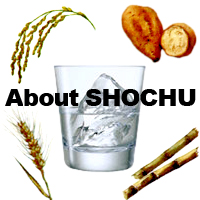 In the land of the rising sun, night-lifers and dining patrons can quickly recognize the differences between shōchū and sake (sa-kay). In addition to recently established shōchū bars, a number of shōchū specialty stores have popped up throughout Japan. Some stores offer as many as 3,200 different varieties of shōchū from all over the country. I noticed
In the land of the rising sun, night-lifers and dining patrons can quickly recognize the differences between shōchū and sake (sa-kay). In addition to recently established shōchū bars, a number of shōchū specialty stores have popped up throughout Japan. Some stores offer as many as 3,200 different varieties of shōchū from all over the country. I noticed in quite a bit of the research I did for this article, that the relationship between the two factions, those for shōchū, those for saki, seemed almost adversarial. An either or kind of thing.
in quite a bit of the research I did for this article, that the relationship between the two factions, those for shōchū, those for saki, seemed almost adversarial. An either or kind of thing.
I have always enjoyed and been intrigued by sake, but admittedly, shōchū had not been on my radar until recently and it was a mystery. I figure the fun will be in the research, tasting all the variations. As I am more 'the saki enthusiast' than Elaine, the shōchū research fell to me. I freely admit there are perks to this job.
Let's start with the Differences
The first and most obvious difference is in the manufacturing process. Sake is brewed, while shōchū is distilled. Shōchū is made with a variety of raw materials, some more abstract than others, including: Japanese basil (shiso), corn, chestnuts (kuri), milk (gyunyu), pumpkin (kabocha), green pepper (pimon), and carrots (ninjin) just to name a few.
Shōchū uses black (kuro), white (shiro), and yellow (kii) koji, and sake uses only yellow (kii)koji.
* koji is mold
 With regard to final product, sake is more comparable to wine, while shōchū bears the likenesses of vodka and whiskey. Lastly, environmental climate requirements are different as well, with shōchū best in warm climates and sake best where it's cooler.
With regard to final product, sake is more comparable to wine, while shōchū bears the likenesses of vodka and whiskey. Lastly, environmental climate requirements are different as well, with shōchū best in warm climates and sake best where it's cooler.
However, in all actuality, shōchū is sake. Sake, in Japanese, refers to an entire category of alcoholic beverages. As mentioned, the sake we all know and love is actually called Nihon-shu. In most of the world's locales, both here and abroad, when you order “sake,” the bar or restaurant will more than likely offer you a glass of Nihon-shu. Nevertheless, despite the dissimilarities between shochu and sake, they are still related in many ways.
The Similarities include:
Both beverages are traditional products of Japan.
They are both made using rice, koji mold, and moromi (mash).
Each product is representative of its origin of production, with a variety of ways to drink them.
Shōchū
In the geographic center of shōchū production, Kyūshū, the drink is far more common than sake. In this region, sake generally means shōchū, and the most common way it is prepared is mixed with hot water. First hot water is poured into the glass, then shōchū is gently added. The liquids mix naturally and stirring is unnecessary. After one, you may experience mild inebriation. Should you venture to have another, you will do so "at your own risk." To achieve a perhaps more authentic and subtle taste, mix the shōchū and water, let it stand for a day, and then gently re-heat.
In 1549, Francis Xavier, the missionary, visited Kagoshima Prefecture. 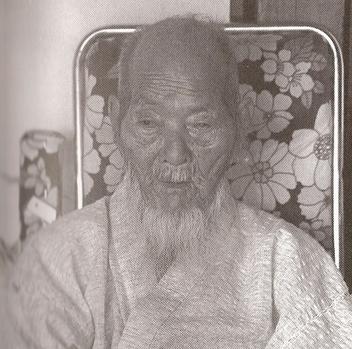 He recorded, "The Japanese drink 'arak' made from rice, but I have not seen a single drunkard, because once inebriated, they immediately lie down and go to sleep." While mostly considered an old-man's drink, recently it has become trendy amongst young women.
He recorded, "The Japanese drink 'arak' made from rice, but I have not seen a single drunkard, because once inebriated, they immediately lie down and go to sleep." While mostly considered an old-man's drink, recently it has become trendy amongst young women.
Japanese citizen Shigechiyo Izumi, who up until recently, held the Guinness Book of World Record for longest life span (120 years), insists shōchū was a part of his daily diet. This even prompted some local Ryūkyū shōchū brewers to market a special Longevity Liquor shōchū bearing his likeness on the front label. Izumi's physician advised against drinking shōchū in his advanced age, but Izumi went on to say, "Without shōchū there would be no pleasure in life. I would rather die than give up drinking."
Types of Shōchū
Honkaku
 Historically known as Otsurui shōchū, it roughly translates to "Genuine" shōchū. In other words, it is the real thing. The production of Honkaku shōchū dates back to the 14th century and it is widely known for its flavor and aroma. This contrasts with the common belief that distilled spirits possess very little flavor or aroma. Spirits like vodka, for example, usually undergo a double distillation process, which attributes to a loss in both flavor and aroma. Honkaku shōchū on the other hand, is produced by a single distillation process, allowing the beverage to retain most of the flavor and aromatic qualities found in the raw material.
Historically known as Otsurui shōchū, it roughly translates to "Genuine" shōchū. In other words, it is the real thing. The production of Honkaku shōchū dates back to the 14th century and it is widely known for its flavor and aroma. This contrasts with the common belief that distilled spirits possess very little flavor or aroma. Spirits like vodka, for example, usually undergo a double distillation process, which attributes to a loss in both flavor and aroma. Honkaku shōchū on the other hand, is produced by a single distillation process, allowing the beverage to retain most of the flavor and aromatic qualities found in the raw material.
- Made using a variety of raw materials: sweet potatoes, barley, buckwheat, and rice are the most frequently used. Three koji mold types: yellow, white, and black. The alcohol content of Honkaku shōchū ranges from 15% to 45%. It can be drunk straight, on the rocks, or mixed with hot or cold water.

Kourui
For a shōchū to be classified as Kourui, it must first undergo a multiple—and often continuous—distillation process. As a result of this distillation process, Kourui shōchū is usually quite odorless and tasteless, which makes it quite comparable to vodka. Some actually refer to Kourui shōchū as “Japanese vodka.”
Kourui lacks most aroma and flavor characteristics. The alcohol content of Kourui shōchū can be as high as 36% . It is most often used to make mixed drinks. Common mixers include: green tea, Chinese Oolong tea, grapefruit and lemon juice.
Awamori
 Awamori is a distilled spirit that is indigenous to the islands of Okinawa and is thought to have been inspired by raoron, a distilled spirit historically produced in Thailand. Awamori actually predates the production of shōchū on mainland Japan and in a sense, paved the way for shōchū production throughout Japan. Up until 1983, it was labeled as “shōchū” by the Japanese government, but now Awamori bears its own label, "Authentic Ryukyuan Awamori."
Awamori is a distilled spirit that is indigenous to the islands of Okinawa and is thought to have been inspired by raoron, a distilled spirit historically produced in Thailand. Awamori actually predates the production of shōchū on mainland Japan and in a sense, paved the way for shōchū production throughout Japan. Up until 1983, it was labeled as “shōchū” by the Japanese government, but now Awamori bears its own label, "Authentic Ryukyuan Awamori."
- Made exclusively with long-grain, Thai style indica riceand one koji type: black, it has with an earthy and robust flavor and aroma. In general, the alcohol content of Awamori ranges from 25% to 45%. Drunk in a variety of ways: straight, on the rocks, or mixed with hot or cold water, the most popular way to drink Awamori is oyuwari, or with hot water.
Rice shōchū is also produced in regions famous for their sake, such as Niigata and Akita prefectures.
Barley shōchū if cask-aged the taste can be quite sharp and strongly reminiscent of single-malt whisky.
Potato shōchū The taste of potato shōchū is particularly evocative of almonds.
Brown sugar shōchū has a mild and not particularly sweet taste, contrary to what might be expected.
Soba shōchū using soba from the local mountainous region as its base ingredient. It's taste is milder than barley shōchū.
Awamori, with its method of production, could be made anywhere in Japan, but Ryūkyū Awamori is a protected geographical indication restricted to Okinawa.
Kasutori shōchū has also come to be known as sanaburi shōchū.
By Region
Shōchū production can be found in practically every prefecture in Japan. But when these locations are inspected more closely, a pattern describing what class of shōchū is produced where, begins to emerge.
Honkaku Shōchū
With a strong emphasis placed on flavor and aroma, Honkaku shōchū production is far more concentrated. The southern region of Japan, particularly Kyushu, is boasted as the Honkaku shōchū capital of Japan. Kyushu is renowned for its production of sweet potato shōchū (imojochu) and rice shōchū (komejochu). The following areas in Japan not only comprises the top 5 points of production, it also accounts for over 90% of all of Japan’s Honkaku production:
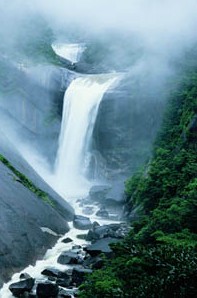
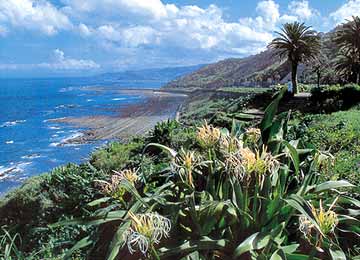
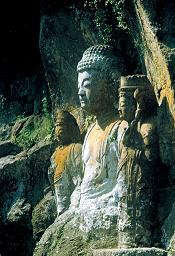
Kagoshima Miyazaki Oita
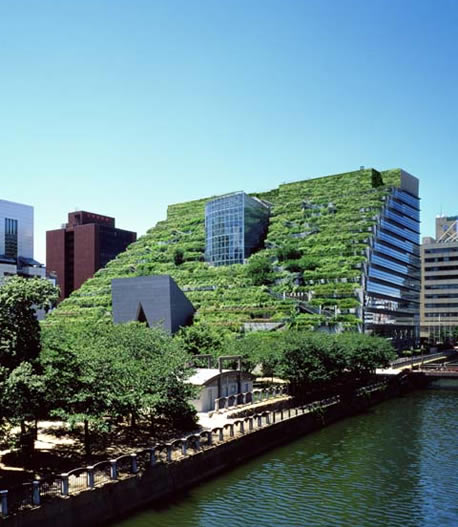
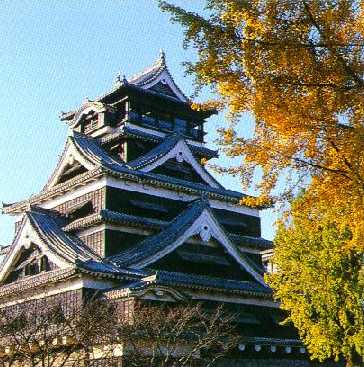
Fukuoka Kumamoto
Kourui Shōchū
The production of Kourui shochu can be found in nearly every region of Japan. Widespread production of rice and grain across the country, and a climate-friendly manufacturing process makes Kourui shōchū the most region-friendly shōchū. The top 5 points of production are as follows:

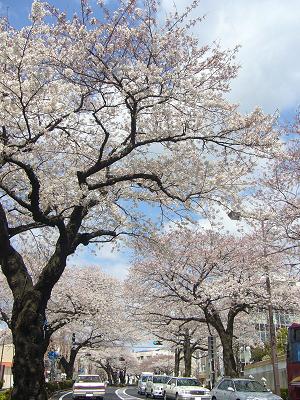
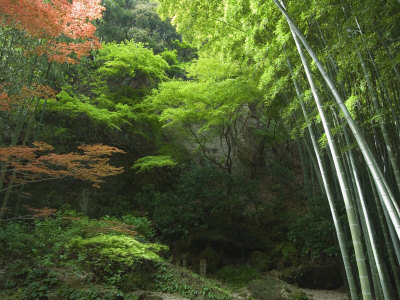
Chiba Ibaraki Kanagawa

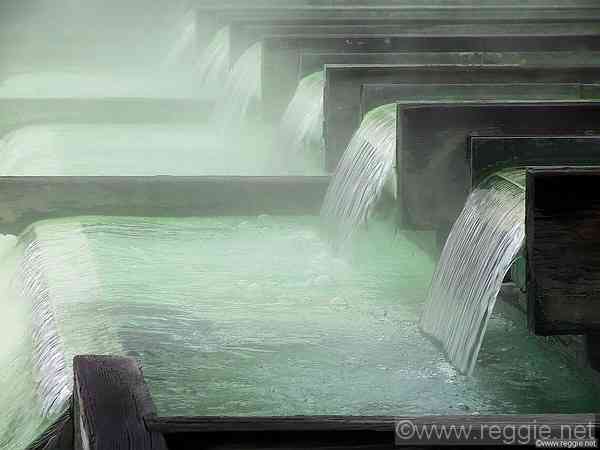
Hokkaido Gunma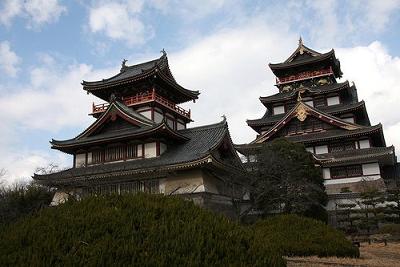
Fushimi is noted both for its moderate weather and for a famous underground spring known as "Fushimizu". The area around the TAMANOHIKARI factory is surrounded by numerous groves of trees, planted and protected by the Imperial Household Agency to beautify the tombs of the Emperors Kanmu and Meiji. This natural surrounding contributes to the delicate taste of the Fushimizu spring. Awamori Shōchū With its method of production, Awamori could be made anywhere in Japan, but Ryūkyū Awamori is a protected geographical indication restricted to Okinawa.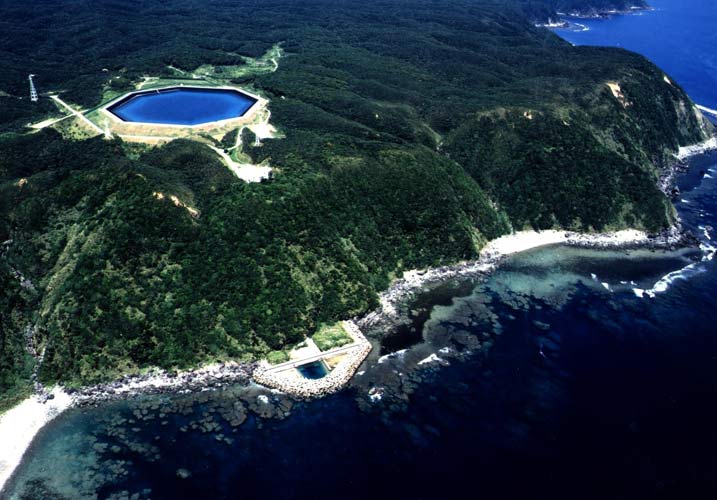
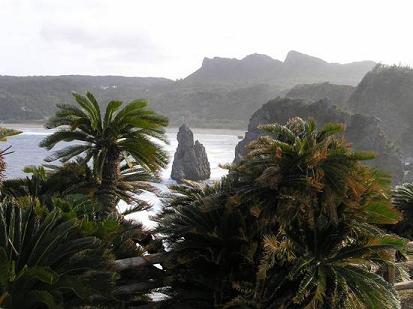
Shōchū Facts
 What makes the history of shōchū so fascinating is its lack thereof. Like other distilled beverages around the world, shōchū was primarily used for medicinal purposes. Distilled spirits have been used as medical remedies since the 9th century all over the world, and after shōchū was first introduced in Japan, it was used in the same way. The actual origin of shōchū remains a mystery to this day. Many experts and historians have hypothesized that shōchū production methods were introduced by Thailand.
What makes the history of shōchū so fascinating is its lack thereof. Like other distilled beverages around the world, shōchū was primarily used for medicinal purposes. Distilled spirits have been used as medical remedies since the 9th century all over the world, and after shōchū was first introduced in Japan, it was used in the same way. The actual origin of shōchū remains a mystery to this day. Many experts and historians have hypothesized that shōchū production methods were introduced by Thailand.
According to legend, it was first introduced in the islands of what is now known as Okinawa sometime around the 14th or 15th centuries. Following this, the production of Awamori and its distillation method spread throughout the islands of Okinawa. Soon after, shochu production was found in the island of Amami Ooshima, the southern most island of mainland Japan, leading to production in Kagoshima, and eventually to the rest of Japan.
In recent years, Japanese shōchū has experienced an unprecedented boom in popularity, not only in its safe haven of Kyushu, but all across Japan. It is truly an exceptional beverage in many ways: the countless number of brands, its method of production, the raw materials used, and its history.
Based on data presented in the annual Liquor Tax Report, between the years of 1996 and 2003, shōchū consumption actually increased by 42%. 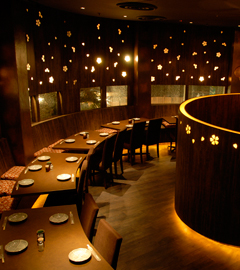 With such a boom in popularity, many conventional bars were unable to maintain a selection of shōchū that was satisfactory for connoisseurs; thus the shōchū bar was born. These are comparable to whiskey bars, except they exclusively serve shōchū. Many of these boast selections of as many as 100 different kinds of shōchū.
With such a boom in popularity, many conventional bars were unable to maintain a selection of shōchū that was satisfactory for connoisseurs; thus the shōchū bar was born. These are comparable to whiskey bars, except they exclusively serve shōchū. Many of these boast selections of as many as 100 different kinds of shōchū.
In the United States, distributors of shōchū have also experienced a surge in sales, though the rise wasn't quite as dramatic as it has been in Japan. Despite a growing demand overseas, many shōchū producers don’t believe there is any need to further expand into international markets because they are satisfied competing within the national market of Japan. Furthermore, some producers are already operating at maximum capacity just to meet demand in Japan.
Image Sources
www.thefoodsection.com , www.00sake.com , www.city.hanamaki.iwate.jp , www.wikipedia.org


